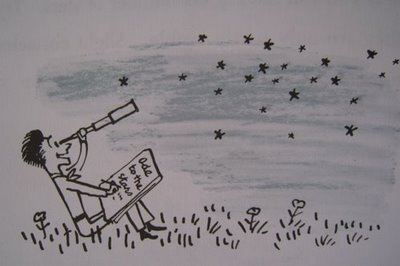
This morning was special: Venus was at peak luminosity in the hour before dawn. The scientific explanation for the planet being at its greatest illuminated extent is nicely explained by EarthSky. So, For the second time this week, I was outside like a lawn ornament in the predawn hour sporting a steaming cup of joe and enjoying the view.
There is a old cottonwood tree in my backyard that has four large trunks emerging from a tremendous base. Though its generous branches obscure the viewing of the sky on nights when I’d just as soon have an unadulterated view of the constellations, I love that it adds texture to the scene. It is a tree with real presence.
As a kid, I learned about the stars from my brother, his telescope, and the classic H.A.Rey book The Stars. (Rey is also wrote the Curious George series.) Rey advised that a limited view can be a fun challenge when trying to identify patterns in the sky. As a kid, I’d go out at night with my book and a flashlight painted with nail polish (as recommended by the author) to dim the light to more easily move from the illustrations of Orion or the Pleiades, to their actual location overhead. I learned from Rey that identifying a constellation when half of it is below the horizon or behind the trees is kind of cool, like solving a puzzle.
Kid or adult, there is nothing like a clear sky at night. Looking into that great expanse helps me to remember that there is a bigger, grander scheme to the world beyond the day to day mishegas. Mishegas, as I learned from Nelson, is a Yiddish word for craziness. Despite the seeming insanity of the world around us, looking to the natural world makes me believe that, as Nelson also likes to say, “it’s all good.”
